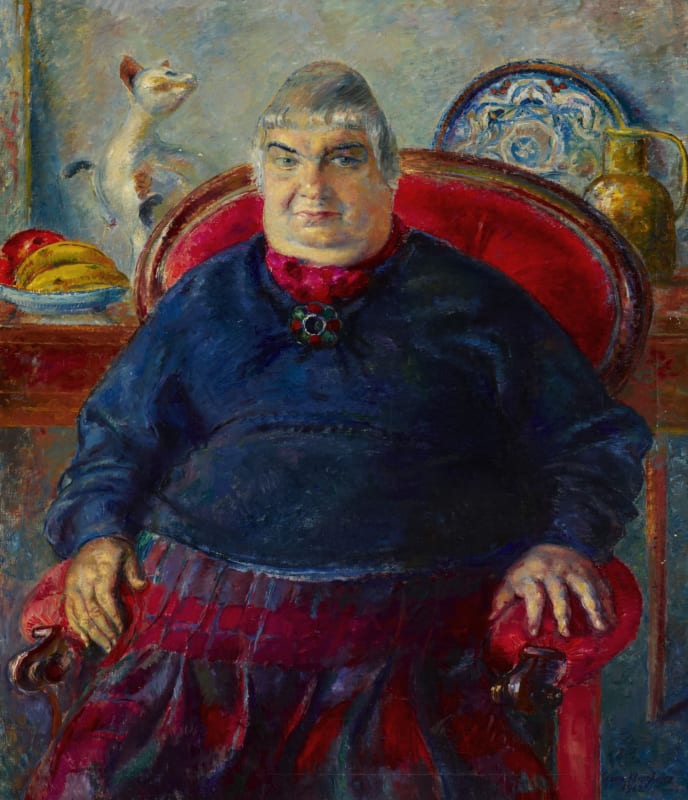Orovida - as she preferred to be known - was born Orovida Camille Pissarro into an assimilated Jewish family and distinguished painting dynasty in Epping, Essex, England in 1893. She was the only daughter of the painter Lucien Pissarro and the wood-engraver Esther Pissarro, and was the granddaughter of the Impressionist painter Camille Pissarro. She began drawing and painting at an early age and was the first woman born into the Pissarro family to become a professional artist.
She first learned to paint in the Impressionist style from her father, studying formally only briefly with Walter Sickert in 1913; she began experimenting with etching in 1914. Throughout her career, Orovida always remained outside mainstream British art movements. She was greatly influenced by an exhibition of Chinese Paintings and Japanese Screens held at the British Museum in 1924 and developed a personal style that combined elements of Japanese, Chinese, Persian, and Indian art.
Later in her life, she took up oil painting and etching due to a deficiency of egg (and hence tempera) during the Second World War. She became absorbed in the study of animals at London Zoo, relating them to the people in their countries of origin. She remained active until the end of her life, while also developing and maintaining the Pissarro family archive, established by her parents in the Ashmolean Museum, Oxford. She exhibited widely with a number of solo shows at venues including the Redfern Gallery in London and participated in exhibitions at the Ben Uri Gallery (between 1934 and 1956) and the Women's International Art Club, of which she was an active and prominent member, as well as regularly at the Royal Academy between 1917 and 1967. Orovida Pissarro died in her home in London, England in 1968.


